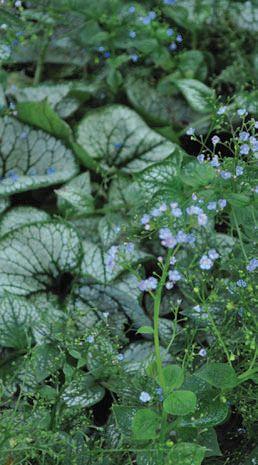
3 minute read
CSU Research
Tough and proven perennials for Colorado
he following perennials are tough and reliable options for Colorado as demonstrated by their excellent performance in the perennial research/demonstration garden north of the University Center for the Arts on the Colorado State University (CSU) campus. Each of T these perennials has been in the garden for several years and, year after year, each has shown adaptability to the area. | CG
Advertisement
Brunnera macrophylla ‘Sea Heart’ (Sea Heart Brunnera)
This unique shade perennial boasts early showy spring flowers that open blue, then turn to a lavender pink color. Sea Heart makes an excellent shade groundcover reaching up to 12 inches in height with a 12-18 inch spread. Once established it requires little water. Tips & Tricks: While this plant requires partial shade, it can handle full sun for short periods of time.
Baptisia ‘Lemon Meringue’ (Lemon Meringue False Indigo)
Lemon Meringue has a bluegreen compound leaf and an attractive, lemony yellow bloom. Having overwintered in the CSU demonstration garden since 2014, it has shown to be a long-lived perennial in Northern Colorado. Its height and spread can reach up to 36 inches. Tips & Tricks: Contrast this plant with a dark-colored bloom in the garden to showcase the yellow blossoms. Be sure to allow spacing for mature size.
Dianthus ‘Kahori Scarlet’ (Kahori Scarlet Dianthus)
A full-sun perennial displaying a mat of scarlet pink color in spring, the plant forms a mound with attractive green grass-like foliage. It grows to a height up to 12 inches with a spread of 12-18 inches. Tips & Tricks: This plant requires winter watering during months with low precipitation. Dead-head to encourage secondary blooms.
Iris sibirica (Siberian Iris)
Siberian Iris has a deep purple bloom with tall, narrow, grass-like foliage. It can handle a variety of soil types and conditions and reaches up to 48 inches in height with a spread of 36 inches. This hardy selection has been in the demonstration garden since 1982 and survived relocation
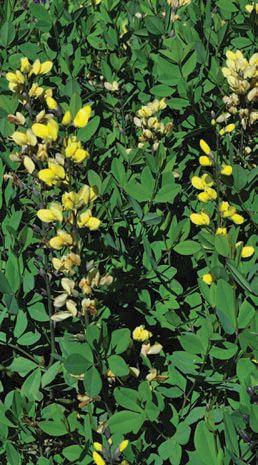
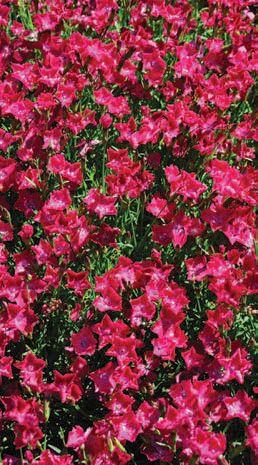
in 2016.
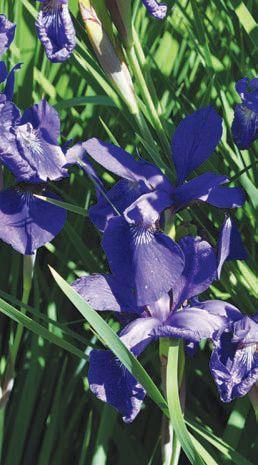
Tips & Tricks: Blooms attract butterflies. Divide plants in summer after blooming.
LEGEND
Full sun
Adapts to part shade
Prefers shadier conditions Useful for containers
Xeric
Requires moisture
Requires more moisture
Persicaria polymorpha (Fleece Flower)
This clump-forming perennial shrub has paint brush-like white blooms. Its late summer bloom offers a naturalized look to the garden. Fleece Flower has overwintered at CSU since 2013 and has not spread beyond a single clump. It reaches 60 inches in height and width. Tips & Tricks: Allow spacing for mature size. The plant dies back to the ground and requires trimming to 12 inches above the ground to encourage next season growth flush.
Polemonium reptans ‘Jacob’s Gold’ (Jacob’s Ladder)
Jacob’s Gold is a variegated perennial for the shade gardener. It offers a lilac-blue-colored flower throughout spring and summer. Its height reaches 18 inches while spreading 10-12 inches. The plant has survived with minimal dieback for over four years at the trial gardens. Tips & Tricks: Requires partial shade but can handle full sun for short periods of time.
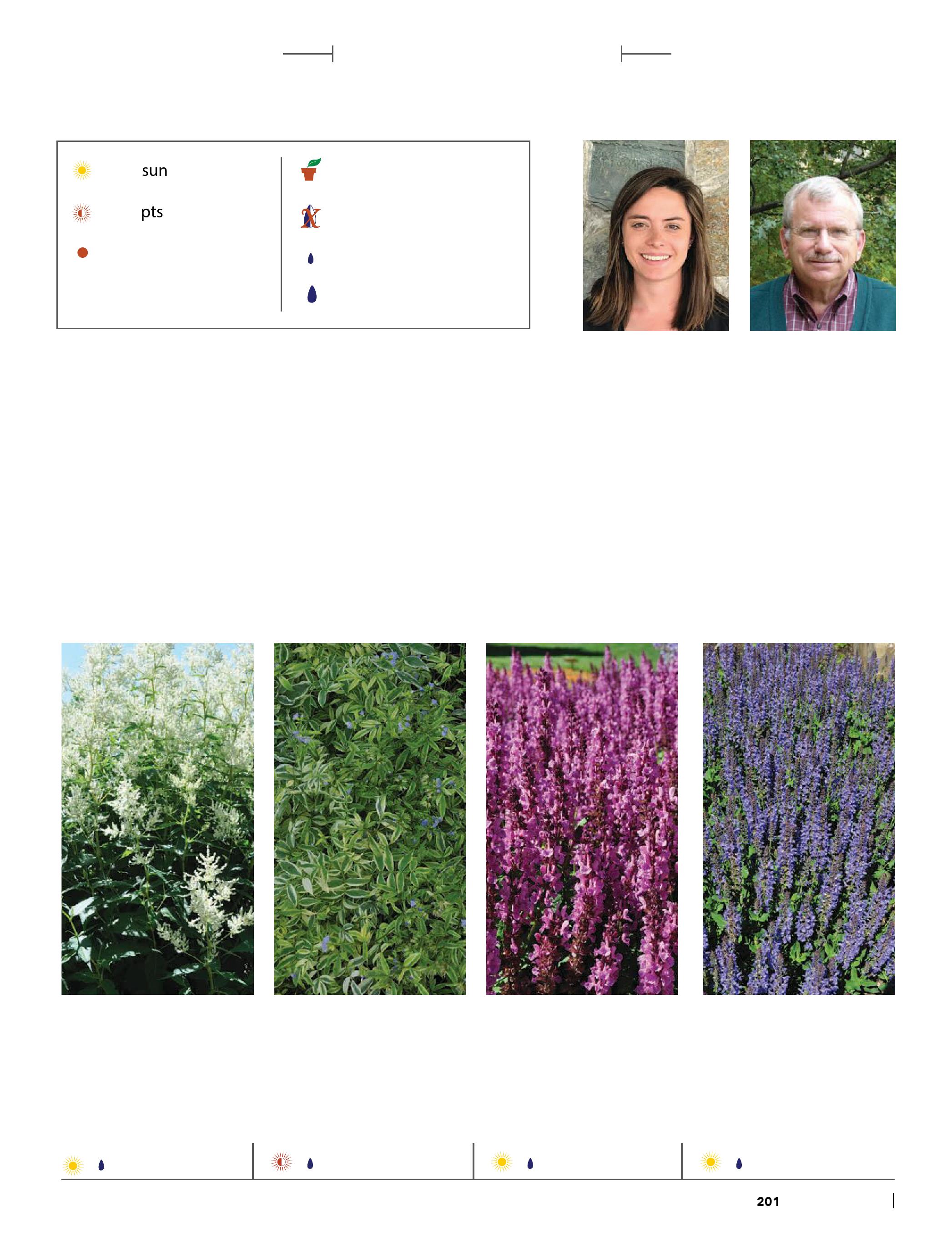
Contributed by Lauryn Schriner, graduate student, and James E. Klett, professor, Colorado State University, department of horticulture and landscape architecture, Fort Collins.
Salvia ‘Rose Marvel’ (Rose Marvel Salvia)
Showy, vivid fuchsia pink flowers appear in spring. The compact size of Rose Marvel—14 inches tall and wide—makes it a good choice for small landscapes. The flowers attract pollinators. Tips & Tricks: Dead-head in spring after first bloom to encourage blooming later in the season.
Salvia ‘Sky Blue Marvel’ (Sky Blue Marvel Salvia)
This plant offers a compact size and a bright blue bloom that attracts pollinators. Its height and spread reach up to 16 inches. Sky Blue Marvel handles full sun and requires minimal water once
established. Tips & Tricks: Dead-head in spring after first bloom to encourage blooming later in the season.




